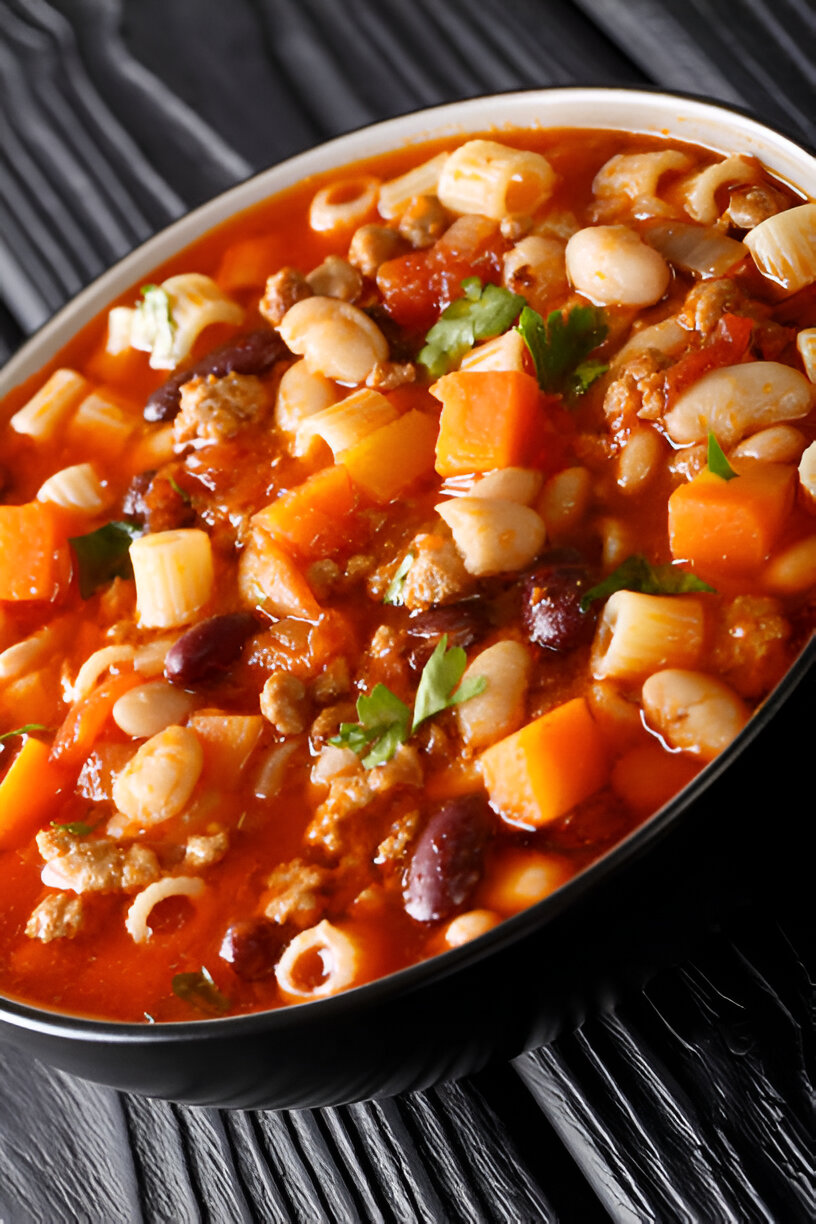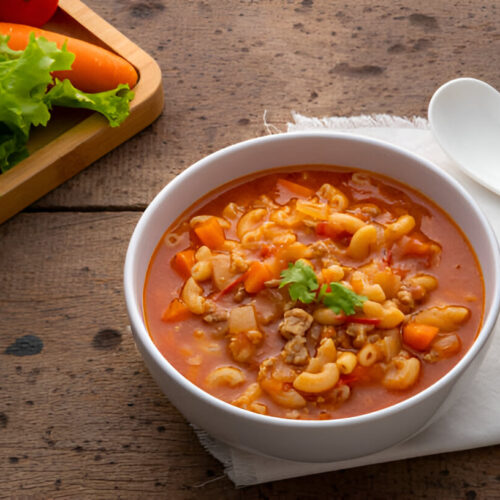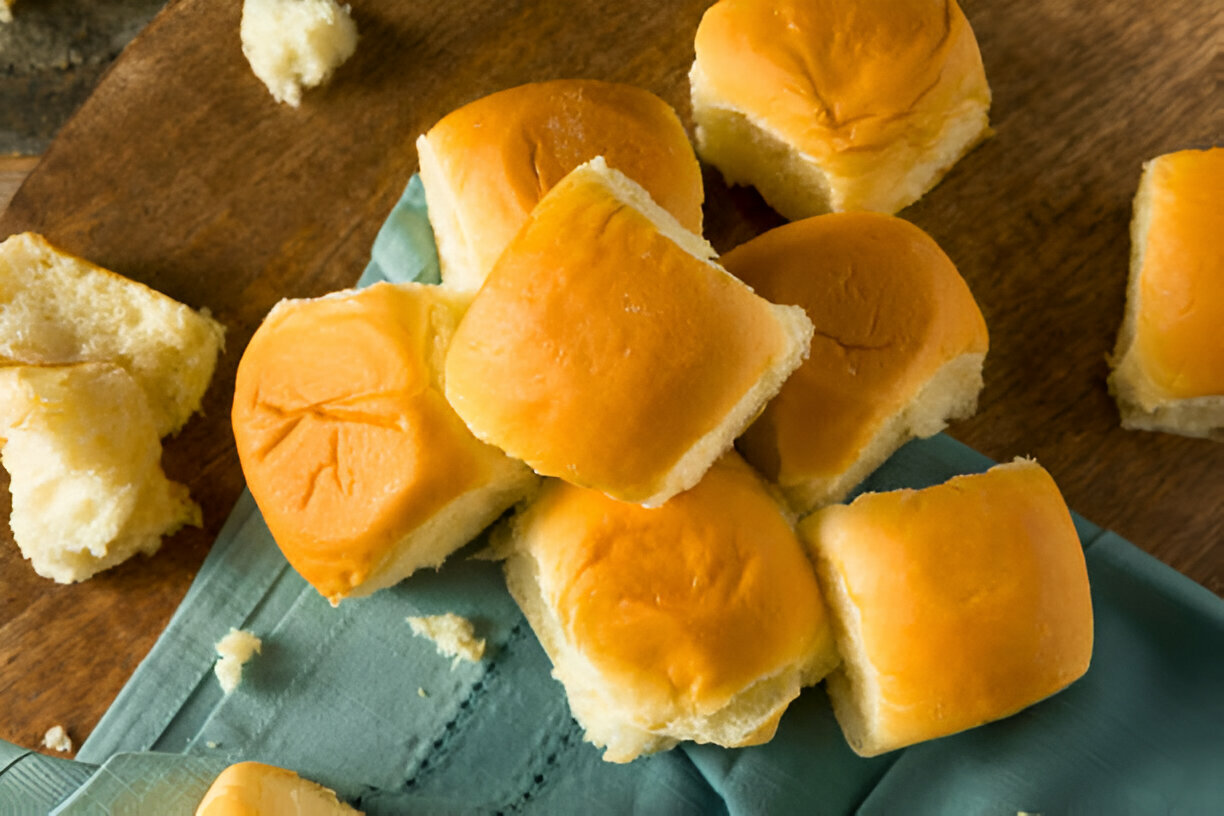Pаsta Fаgioli , that warm soup everyone seems to love , feels like a hug inside a bowl . It's simple , but it's full of flavor and history . Made with just a few things you might have at home , it went from a poor farmer’s meal to a dish people everywhere enjoy .
Over the years , this humble soup traveled far beyond its homeland . Now you can find it on tables from New York to Tokyo , and in homes where folks crave something cozy and filling .

History of Pаsta Fagioli
This soup started in rural Itаly , where families made do with what they had . Beans , pasta , and veggie scraps turned into a meal that could fill many bellies . Back then , people working fields or building houses needed a dish that didn’t cost much but kept them full .
As time passed , each region in Itаly added its own twist . Up north , some folks tossed in meat or richer broth . Down south , others kept it light and veggie-based . But no matter where you go , the heart of the dish stayed the same : simple ingredients and big flavor .
What is Pasta Fagioli?
When you look at Pаsta Fаgioli , you see pasta shapes like little tubes or shells mixed with beаns . Onions , carrots , and celery float around in a tasty brоth that might have garlic and herbs . It's basically a pasta-and-beаns soup , but so much more .
Every spoon brings a soft bite of pasta and a creamy bean , with crunchy veggies for a bit of snap . The broth ties it all together . Sometimes there's olive oil drizzled on top , or cheese for a salty kick .
Nutritional Profile of Pasta Fagioli
Believe it or not , this humble soup packs good stuff for your body . Beans give you protein and fiber to help you feel full . Pasta adds carbs for energy . Veggies bring vitamins and minerals .
A bowl can be around 260 calories , with about 15 grams of protein , 35 grams of carbs , and some healthy fats if you use olive oil . Compared to creamy pasta dishes that can be heavy , Pasta Fagioli is a lighter yet still hearty choice .
Traditional Pasta Fagioli Recipe
Ingredients
- 1 cup small pasta , like ditalini or shells
- 1 can (15 oz) cannellini beans or borlotti beans , rinsed and drained
- 1 medium onion , chopped
- 2 carrots , diced
- 2 celery stalks , diced
- 4 cups veggie or chicken stock
- 2 tablespoon olive oil
- 2 cloves garlic , minced
- 1 teaspoon dried rosemary
- 1 teaspoon dried thyme
- Salt and pepper to taste
Directions
1. Prep veggies and beans : Chop onion , carrots , and celery . Rinse beans under cold water to get rid of extra sodium .
2. Cook veggies : In a big pot , heat the olive oil over medium heat . Add onion , carrots , and celery . Stir for about 5 to 7 minutes until they start to get soft .
3. Add beans and stock : Mix in garlic and cook one more minute . Pour in beans and the stock . Bring to a low boil , then turn down the heat to simmer for 15 minutes so flavors mix .
4. Cook the pasta : Put pasta into the pot . Stir gently so it doesn't stick . Cook until pasta is a bit firm , about 8 to 10 minutes .
5. Finish : Add rosemary , thyme , salt , and pepper . Give it a taste and fix any seasoning . Drizzle a little olive oil on top if you like , and add fresh herbs or cheese .
Cooking Advice
- You can add pancetta or sausage for a meatier soup , or try quinoa to make it gluten-free .
- Leftovers keep for up to 3 days in the fridge . Reheat on the stove or in the microwave .
- Serve with crusty bread or a simple salad . A glass of Chianti pairs well .
Variations of Pasta Fagioli
You can switch things up easily with this soup . For a richer taste , toss in some Italian sausage or bacon . To keep it vegetarian , skip the meat and use veggie stock .
Try different beans like chickpeas or black beans , or use gluten-free pasta if you need . Some people even use zucchini noodles instead of pasta for a low-carb version .
Common Mistakes When Making Pasta Fagioli
One big slip is overcooking the pasta . It turns to mush fast in soup . A fix is cooking pasta separately and adding it just before serving .
Also , don't use old canned beans or low-quality stock . Since the recipe is simple , each part matters .
If you use dried beans , soak them overnight so they cook evenly and don't stay hard .
Popular Toppings and Accompaniments
A sprinkle of Parmesan or Pecorino cheese adds a salty bite . A drizzle of extra virgin olive oil can boost the flavor .
Crusty breads like baguette , focaccia , or sourdough are perfect for dipping . Fresh herbs such as basil or parsley add color and zing .
Cultural Significance of Pasta Fagioli
In the US , Pаsta Fаgioli is a comfort food classic . You'll find it at Italian-American dinners , potlucks , and family feasts . It brings people together because it's warm , simple , and filling .
Its easy recipe lets cooks everywhere make it their own . That's why it shows up in menus worldwide , still reminding folks of home .
FAQs
What does "Pasta Fagioli" mean ?
It means "pasta and beans" in Italian , telling you exactly what's inside .
Is Pasta Fagioli healthy ?
Yes . It has protein from beans , fiber to help digestion , and veggies for vitamins .
Can I make it ahead of time ?
You sure can . It tastes even better after sitting in the fridge for a day or two .
Which beans are best ?
Cannellini and borlotti beans are classic , but chickpeas or black beans work too .
How do I thicken the soup ?
Blend some beans and broth until smooth and stir it back in , or add a cornstarch slurry .
Conclusion
Pаsta Fаgioli is more than a meal ; it's a bit of history in a bowl . From its humble roots to tables around the world , it's proof that simple food can be amazing . Try making it at home and taste why folks can't get enough .

pasta fagioli
Equipment
- 1 large pot
- 1 wooden spoon
- 1 measuring cups and spoons
- 1 ladle
- 1 cutting board
Ingredients
- 2 tablespoons olive oil
- 1 medium onion, diced
- 2 medium carrots, diced
- 2 stalks celery, diced
- 3 cloves garlic, minced
- 6 cups vegetable broth
- 1 can (14 ounces) canned diced tomatoes
- 1 can (15 ounces) canned kidney beans, rinsed and drained
- 1 can (15 ounces) canned cannellini beans, rinsed and drained
- 1 cup small pasta (like ditalini)
- 2 leaves bay leaves
- 1 teaspoon dried oregano
- to taste salt
- to taste black pepper
- fresh parsley, for garnish (optional)
- grated Parmesan cheese, for serving (optional)
Instructions
- Heat olive oil in a large pot over medium heat. Add the diced onion, carrots, and celery. Sauté for about 5 minutes, or until the vegetables are softened.
- Stir in the minced garlic and cook for another minute until fragrant.
- Add the vegetable broth, canned tomatoes (with their juice), kidney beans, cannellini beans, bay leaves, and oregano to the pot. Bring the mixture to a simmer.
- Once simmering, add the small pasta. Cook according to the package instructions, usually about 8-10 minutes, until al dente.
- Season the soup with salt and black pepper to taste. Remove the bay leaves before serving.
- Ladle the pasta fagioli into bowls. Garnish with fresh parsley and a sprinkle of grated Parmesan cheese if desired.




